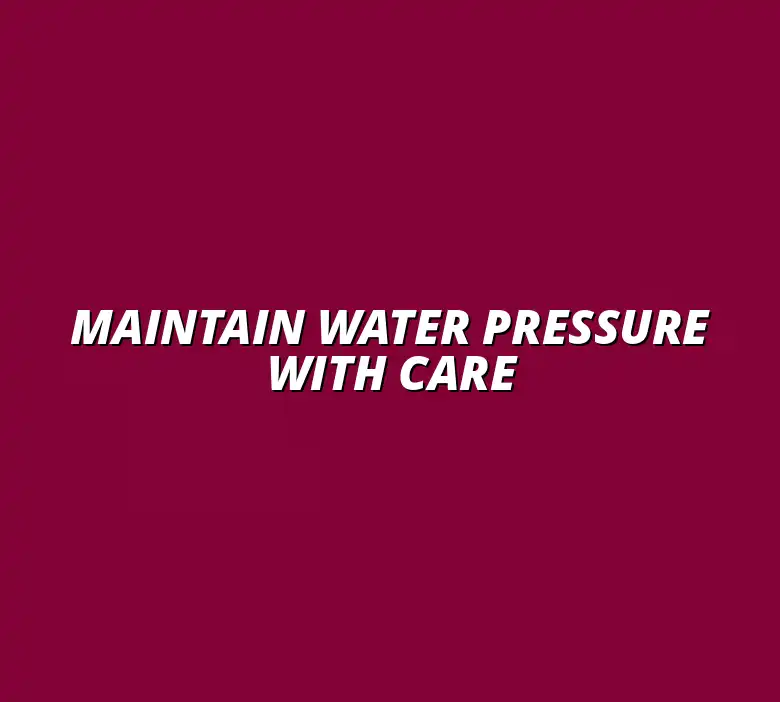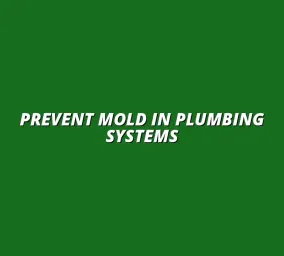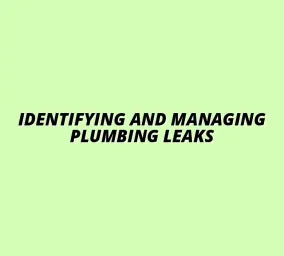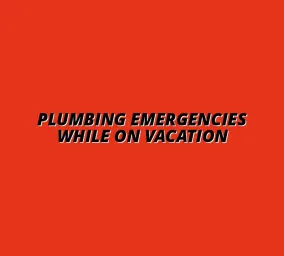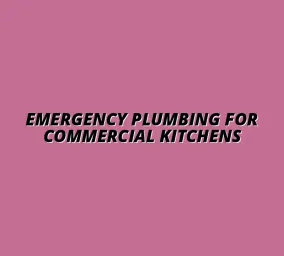Maintain Water Pressure with Care
Understanding Low Water Pressure and Its Causes
Low water pressure can be a frustrating issue for many homeowners. It refers to a situation where the force of water coming from faucets, showers, or other plumbing fixtures is weaker than normal. When experiencing low water pressure, tasks like showering or washing dishes can become tedious, prompting the need to understand its causes and potential solutions.
For homeowners, grasping the concept of low water pressure is crucial as it directly affects daily routines. It can lead to longer wait times for filling sinks, running showers, and even problems with appliances like dishwashers. Understanding low water pressure not only informs you about the problem but also empowers you to seek solutions. For example, addressing low water pressure in your kitchen is crucial for efficient food preparation. Check out these tips for fixing low kitchen water pressure.
Defining Low Water Pressure in Plumbing Systems
Low water pressure occurs when the water flow in your plumbing system drops below normal levels. This can be measured in pounds per square inch (PSI). A typical household water pressure ranges from 40 to 60 PSI; anything below 40 PSI may be considered low.
Homeowners often notice low water pressure when multiple fixtures are used simultaneously. For example, if someone is showering while the washing machine is running, the shower may become a trickle instead of a steady flow. This lack of water pressure can indicate underlying plumbing issues that need attention.
What Low Water Pressure Means for Homeowners
Experiencing low water pressure can be more than just an inconvenience; it can signal larger plumbing problems. It often leads to the need for costly repairs if not addressed promptly. Many homeowners may feel frustrated when they encounter low water pressure, as it can disrupt daily activities. Preventing bathroom water pressure problems requires proactive maintenance. Learn more about preventing bathroom water pressure problems.
Understanding the implications of low water pressure is essential. Not only can it affect comfort, but it may also lead to reduced efficiency in appliances. For example, if your dishwasher isn't receiving enough water, it may not clean dishes effectively, leading to additional issues.
Common Indicators of Low Water Pressure
Several signs can indicate low water pressure in your home. Here are some common indicators to watch for:
- Weak or inconsistent water flow from faucets and showerheads.
- Longer fill times for bathtubs, sinks, and washing machines.
- Difficulty in using multiple fixtures at once.
- Unusual sounds in plumbing, like gurgling or hissing.
If you notice any of these signs, it may be time to investigate the cause of your low water pressure. Ignoring these indicators can lead to more significant plumbing troubles down the road, so staying vigilant is key. Regular maintenance, including addressing pipe corrosion, is crucial for preventing major plumbing issues. Check out this guide on preventing pipe corrosion.
Identifying Common Causes of Low Water Pressure
Understanding the causes of low water pressure is essential for effective troubleshooting. Various factors can contribute to this issue, and recognizing them can help you resolve the problem efficiently. Here are some common culprits to consider:
- Blockages in pipes or fixtures.
- Corrosion or damage in plumbing material.
- Water supply problems from the municipality.
- Fixtures that are not suited for your plumbing system.
By examining each potential cause, homeowners can better assess their plumbing situation and take appropriate action. Ignoring these causes can lead to ongoing issues with water pressure, making it vital to address them proactively. For comprehensive plumbing tips, visit our resource page on essential plumbing tips for homeowners.
Pipe Blockages and Their Impact on Water Flow
Blockages in pipes are one of the most common reasons for low water pressure. These blockages can stem from various sources, including mineral buildup, debris, or even tree roots invading your plumbing system. As a result, the water flow decreases, leading to frustrating experiences at home.
Identifying blockages early on is critical. Regular maintenance, such as cleaning and flushing pipes, can help prevent these blockages from forming. Homeowners can also consider using drain cleaners or hiring a plumber for more severe cases.
Effects of Corroded or Damaged Pipes on Water Pressure
Corroded or damaged pipes can significantly impact water pressure. Over time, pipes can degrade due to age, corrosion, or harsh water conditions. This deterioration leads to leaks and may reduce the efficiency of water flow throughout the home.
Homeowners should be aware that if their plumbing system is older and shows signs of corrosion, it could be time for an upgrade. Investing in new piping can not only improve water pressure but also enhance overall plumbing efficiency.
The Role of Water Supply Issues in Low Water Pressure
Sometimes, low water pressure isn't due to problems within the home but rather issues with the municipal water supply. Various factors can cause fluctuations in water pressure, including high demand during peak hours or maintenance work being done by the water company.
If you suspect that your low water pressure is due to external factors, it’s a good idea to contact your local water supplier. They can provide information on any ongoing issues that might be affecting your water supply and help you find solutions. If you are in Alcester, Birmingham and need a plumber, consider checking out this plumbing service.
Understanding the Impact of Plumbing Fixtures on Water Pressure
The type and condition of plumbing fixtures can significantly affect water pressure. Fixtures like faucets, showerheads, and valves may have built-in flow restrictors, limiting water output intentionally. If these fixtures are outdated or malfunctioning, they can lower water pressure.
Upgrading to modern, high-efficiency fixtures can often improve water flow. Homeowners should consider checking their fixtures regularly to ensure they are functioning correctly. Simple replacements can lead to noticeable improvements in water pressure!
Practical Steps for Preventing Low Water Pressure
Preventing low water pressure is essential for a comfortable home experience. By taking proactive measures, you can avoid the frustration that comes with weak water flow. Understanding the systems within your plumbing will help you keep everything running smoothly! Using a water softener can significantly help prevent plumbing issues. Learn more about preventing plumbing issues with water softeners.
Implementing Regular Inspection Protocols
One of the best ways to prevent low water pressure is to implement regular inspection protocols. These inspections can help catch issues before they escalate into major problems. Scheduling these checks will not only keep your plumbing healthy but also offer peace of mind.
Consider the following options for inspections:
- Schedule a professional plumbing inspection at least once a year.
- Keep a checklist of common plumbing problems to look for when inspecting your system.
- Utilize technology, such as video pipe inspections, for a thorough examination.
Scheduling Professional Plumbing Inspections
Hiring a professional plumber can be invaluable for maintaining healthy water pressure. Professionals have the training and tools to identify issues you may overlook. They can also provide solutions tailored to your specific plumbing needs!
When you schedule an inspection, make sure to:
- Choose a reputable plumber with positive reviews and relevant experience.
- Discuss your concerns about water pressure with them.
- Ask for a detailed report of their findings and recommendations.
DIY Checks to Monitor Plumbing Health
While professional help is great, there are also simple DIY checks you can do! Regularly monitoring your plumbing health can help you catch potential issues early. Here are some easy steps you can take:
- Check for visible leaks around pipes and fixtures.
- Inspect water pressure using a pressure gauge at various outlets.
- Test the flow rate by running taps in different areas of your home.
Addressing Common Plumbing Issues Promptly
If you notice any signs of low water pressure, it’s important to address these issues as soon as possible. Ignoring problems can lead to bigger headaches down the line. Quick action will help maintain optimal water pressure in your home! Addressing low water pressure in your water heater is crucial for efficient hot water delivery. Find out how to fix low water pressure in water heaters.
Identifying and Fixing Leaks in Plumbing Systems
Leaks can significantly affect your water pressure and should never be ignored. Spotting a leak early can save you time and money. Here’s how to identify and fix leaks:
- Look for puddles or damp spots around pipes and fixtures.
- Monitor your water bill for sudden increases.
- Use food coloring in toilet tanks to check for leaks.
Replacing Old or Damaged Fixtures to Improve Pressure
Old or damaged plumbing fixtures can restrict water flow and contribute to low pressure. If you notice that certain faucets or showerheads are not performing well, it may be time for an upgrade. Here are some tips for replacement:
- Choose high-efficiency fixtures that promote better water flow.
- Ensure fixtures are compatible with your current plumbing system.
- Consider consulting a plumber for proper installation.
Understanding Water Pressure Regulation and Management
Water pressure regulation is key to maintaining a steady flow throughout your household. Understanding how pressure works in your plumbing system can make a big difference. Let’s dive into some essential aspects of water pressure management!
The Role of Pressure Regulators in Plumbing Systems
Pressure regulators play a crucial role in controlling the water pressure entering your home. They ensure water pressure is at a safe and usable level. If your home has fluctuations in water pressure, it might be time to check your regulator.
How to Adjust Pressure Regulators Safely
Adjusting your pressure regulator can help improve water flow. However, it’s important to do it safely to avoid any mishaps. Keep these tips in mind:
- Turn off the main water supply before making adjustments.
- Use a pressure gauge to monitor changes as you adjust.
- Make small adjustments, and test the water pressure before making further changes.
Benefits of Installing Pressure-Boosting Systems
If you’re consistently experiencing low water pressure, a pressure-boosting system might be the solution! These systems can enhance water flow and improve overall comfort in your home. Here are a few benefits:
- Increased water pressure for appliances and fixtures.
- Improved shower performance and faster filling of tubs.
- Enhanced efficiency of irrigation systems for outdoor use.
Frequently Asked Questions about Low Water Pressure
Many homeowners have questions when it comes to low water pressure. Understanding common concerns can help you troubleshoot issues more effectively. Here are some frequently asked questions!
What Immediate Actions Can I Take If I Experience Low Water Pressure?
If you find yourself dealing with low water pressure suddenly, there are a few immediate actions you can take. Assessing the situation quickly can help you decide if you need professional assistance.
- Check to see if other fixtures are functioning properly.
- Inspect for any visible leaks or burst pipes.
- Contact your water supplier to see if there are any supply issues.
How Can Seasonal Changes Affect My Water Pressure?
Seasonal changes can have a surprising impact on water pressure. Understanding these fluctuations can prepare you for any challenges that may arise throughout the year. Here are some factors to consider:
- Winter can cause pipes to freeze, leading to reduced water flow.
- Heavy rains can saturate ground levels, affecting underground pipes.
- In drought conditions, water supply may be limited, impacting pressure.
Final Thoughts on Plumbing Care for Optimal Water Pressure
Taking care of your plumbing system is essential to maintain optimal water pressure. By following these practical steps, you can prevent low water pressure and ensure a smooth, consistent flow throughout your home. Remember, a little maintenance goes a long way!
Summarizing Key Takeaways for Homeowners
In summary, understanding and maintaining your plumbing system is vital. Regular inspections, timely repairs, and adjustments to pressure regulators can greatly enhance your water pressure. Don’t forget to address issues promptly and consult professionals when needed!
Encouraging Proactive Plumbing Maintenance Habits
Proactive maintenance habits can make all the difference in keeping your home’s plumbing in top shape. Make it a routine to check your system and perform necessary upkeep. Your efforts will pay off in the form of consistent water pressure and a more comfortable living environment!

